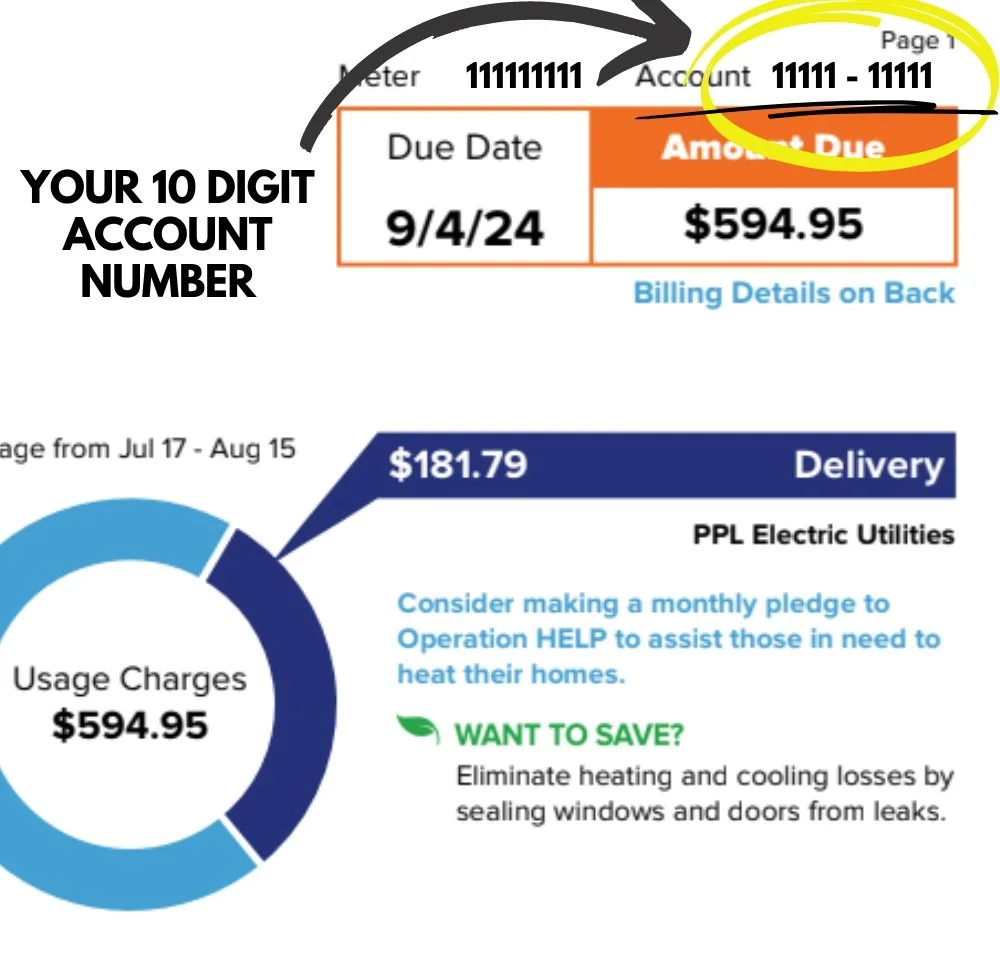Understanding Your PPL Bill:
If you're a PPL Electric Utilities customer, you may have noticed that your energy bill can sometimes be hard to decipher. With various charges and fees included, understanding how much you’re paying and why can feel overwhelming. This guide will help you read your PPL Electric Utilities bill properly and explain the difference between supply and delivery charges, so you can take control of your energy expenses.
Understanding Your PPL Electric Utilities Bill
Your PPL bill is not just a monthly expense—it’s a detailed breakdown of your energy consumption and costs. By understanding the key sections of your bill, you can better manage your energy usage. Here’s a look at the essential parts of your PPL bill:
Account Information:
This section includes your unique PPL account number, the billing period, and your payment due date. Keeping this information handy ensures you can easily manage your account and payments.
Energy Usage:
PPL tracks your electricity consumption by reading your meter each billing cycle. Your bill will show your usage for the billing period, helping you monitor your energy habits and compare usage across different months or seasons.
Charges Breakdown:
This part of the bill provides a detailed breakdown of the costs associated with your energy usage. PPL separates these charges into supply, delivery, taxes, and other applicable fees. This transparency helps you understand exactly where your money is going.
Payment Options:
PPL offers several convenient payment options. You can set up automatic bill payments using a bank account, credit card, or debit card, or you can pay online, by phone, or by mail (check or money order). Managing your payments through their online portal is quick and easy.
The Difference Between PPL Supply and Delivery Charges
A key to understanding your PPL bill is knowing the difference between supply and delivery charges.
Supply Charges:
Supply charges cover the cost of producing or purchasing the electricity you use. PPL doesn’t generate electricity itself; instead, it purchases energy from suppliers. If you live in a deregulated energy market like Pennsylvania, you can choose a third-party Energy Service Company (ESCO) for your electricity supply. PPL will still deliver the electricity to your home, but you have the option to shop around for more competitive rates for the supply portion of your bill.
Delivery Charges:
Delivery charges cover the cost of delivering electricity to your home, including maintaining the infrastructure such as power lines, poles, and substations. These fees are regulated by the Pennsylvania Public Utility Commission and remain fairly stable to cover the cost of keeping the electricity grid in good working order.
Comprehensive PPL Charges Overview
Here’s a more detailed breakdown of the charges you may see on your PPL Electric Utilities bill:
Supply Charges: These reflect the cost of generating or purchasing the electricity you consume.
Delivery Charges: These fees cover the cost of transporting electricity to your home and maintaining the infrastructure.
Customer Charges: A fixed monthly fee that covers administrative costs like billing and customer support services.
Taxes and Fees: These include state and local taxes applied to your energy usage, as well as any additional fees depending on your location.
Other Charges: This section may include extra fees such as late payment penalties or special service fees, such as meter installation or upgrade costs.
Energy-Saving Strategies
By lowering your energy consumption, you can reduce both your PPL bill and your environmental impact. Here are some simple, effective strategies to help you save energy:
Upgrade to Energy-Efficient Appliances: Newer, energy-efficient appliances consume significantly less power than older models, saving you money over time.
Turn Off Unused Devices: Unplugging devices and turning off electronics when they aren’t in use can prevent unnecessary power consumption.
Install a Smart Thermostat: Smart thermostats can help you optimize your heating and cooling system, reducing energy use when you’re not at home.
Take Advantage of Natural Light: Use daylight to light your home during the day, minimizing the need for artificial lighting.
Seal Air Leaks: Proper insulation and sealing drafts around windows and doors can help maintain a consistent temperature indoors, reducing the need for heating or cooling.


